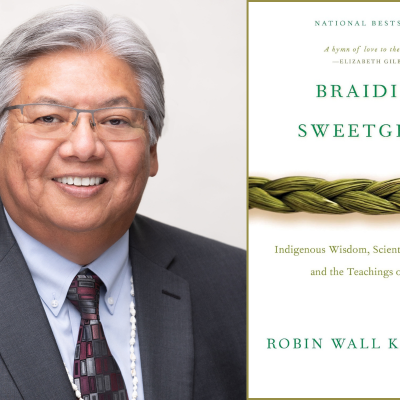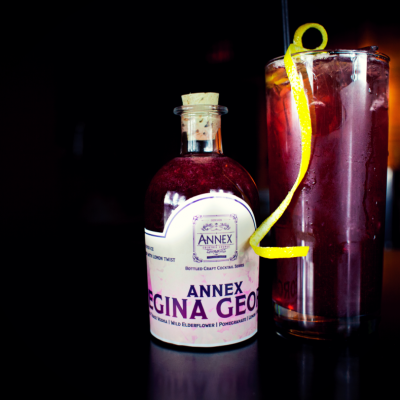Next Doors: Crossing Borders

Crossing Borders
CALA Alliance is mending wounds through the arts
By Tom Evans
Our humble publication is not political by nature. But we do believe in diversity and its importance to our community, which is the theme this month as we look at those in the Valley who are working toward a more inclusive, integrated society.
It’s hard to talk about the topic in 2019 without acknowledging the political environment we find ourselves in. And it’s even harder to champion the cause of diversity when the focus on our physical and human barriers is more profound than ever.
So, imagine the task in front of Casandra Hernández Faham. She’s the executive director of the CALA Alliance — Celebración Artística de las Américas — a Phoenix-based organization with the mission of connecting Arizona, Mexico and Latin America through collaborations involving the arts. The organization’s goal is to unite our cultures, and to remind Arizonans of their integrated place in the Americas and the fact that we’re practically part of Latin America ourselves.
At its core, it’s simply an arts organization that provides public programming, artist commissions, artist residencies and cultural exchanges to support Latino arts and culture. Sounds simple enough. Let’s focus on that for a minute.
CALA started in 2010 as a Latino arts festival, which was the extent of its activities for its first five years. Hernández Faham joined the organization as its first executive director in 2016 with the goal of making CALA more than just an event.
“At that time, the board was looking to transition from being a festival into being a multidisciplinary organization presenting a diversity of programs,” she said. “So we’ve been in that space of creating brand-new programs, changing our mission and vision so that we have a new offering than it was before.”
CALA is working with contemporary artists in Arizona, Mexico and Latin America to promote Latino culture and art. Its programs include Crossfade LAB, where they bring Latino and Latin American artists to the Valley for a conversation series on art. The idea is fueled by the concept of a crossfade switch on a DJ’s turntable, where artists from differing genres may collaborate in ways they’ve never done before.
They also support an artist-in-residency program where an Arizona artist visits Guadalajara, Mexico, and an artist from Guadalajara comes to Arizona for several weeks. The current resident visiting Arizona is visual artist Karian Amaya, who will present talks and workshops free of charge and open to the public through Oct. 12.
“It’s about putting these two cities, which are becoming very important places in terms of contemporary art, in dialogue with one another,” Hernández Faham said.
CALA also has a partnership with the Arizona State University Art Museum, which boasts a large collection of Latin American art. And their major fundraising event is their Sabor dinner, where a Phoenix chef — this year it’s Silvana Salcido Esparza of Barrio Café — collaborates with a chef from Mexico to celebrate Latin cuisine.
But the conversation eventually turns away from art, and toward what kind of impact art can have on a much broader, more difficult conversation.
“We’re living in a time where there’s a lot of conversation about borders,” Hernández Faham said. “There’s a lot of conversation about what divides us and separates us. Because of that, there’s a greater need for creating culture flows and spaces where we can connect local issues to global issues. At the end of the day, we have conversations about who we are in Arizona and who we want to be. We believe that cultural work is really important to the well-being of a society. It is where we express our values, our desires, our intentions, and that’s the space where CALA’s work is located.”
Hernández Faham is originally from Hermosillo, Sonora, and said that when she came to Arizona she was surprised how little Arizonans knew about their neighbor to the south. And she points out a sad reality: In this day and age, many Latinos feel their lives and their worth are being devalued by the focus on border issues.
“On one hand, we feel invisible in some of the narratives of the city,” she said. “We feel like our contributions are not valued, our humanity is not considered in the same way. Our lives literally don’t have the same value. On the other hand, we sometimes feel over-represented and misrepresented in the way the media talks about the borders. Right now, literally in the newspaper we see the words ‘Hispanic invaders.’ This is not new. This has been around as long as this country has been in existence. This is a reality that people of color have to deal with.
“For me, it always comes back to the question of, what are the stories we are telling?” she said. “What are the narratives that we as a society are creating and supporting that make thinkable this political environment? Politics usually follows culture, not the other way around. If you look at any major movement in the history of the country, it’s usually first a cultural conversation and a shifting of values that then impacts the political context. So I am really interested in the stories we are telling, especially here in Arizona, and the idea that not all of us are seen in our full humanity. So how do we create narratives — not only Latinos, but people of color and everyone who calls this place home — that give us humanity?”
Hernández Faham feels that artists and those who work in culture are the ones to help start the conversations that need to take place — “How we’re going to fix this?” as she put it. At a time when there’s so much divisiveness, it’s art that can help us overcome the hate and misconceptions. And the arts community is up for the challenge.
“I think the artists create out of our times. They are always reflecting some aspect of the times we are living in,” she said. “Some artists do this very intentionally, very decidedly, and other artists may not make this such a central concern, but it is still reflected in what they do.
“I couldn’t think of a better challenge to be spending my time on,” she said. “The work we have to do as a nation is daunting, but it’s the best work we can be called to do right now.”
To learn more, visit callaalliance.org






